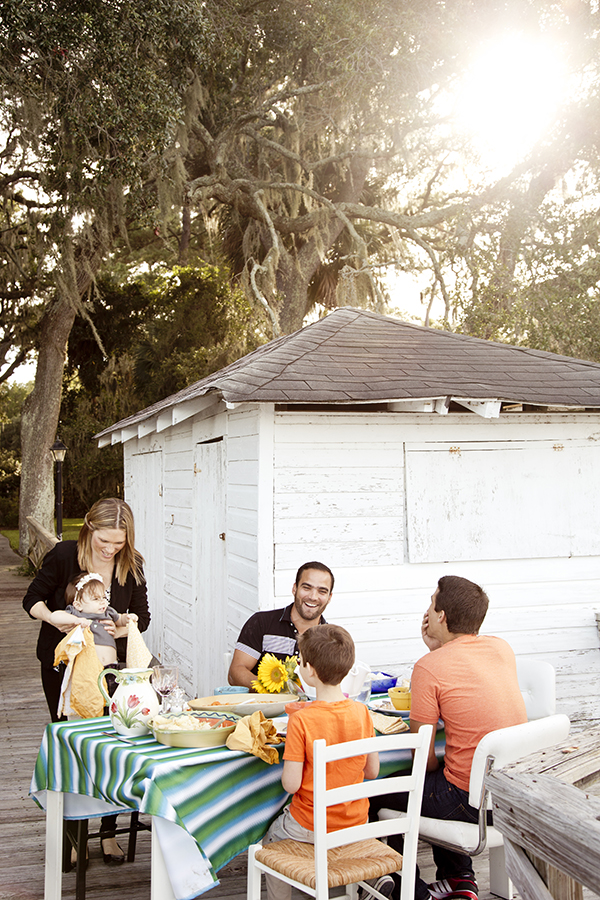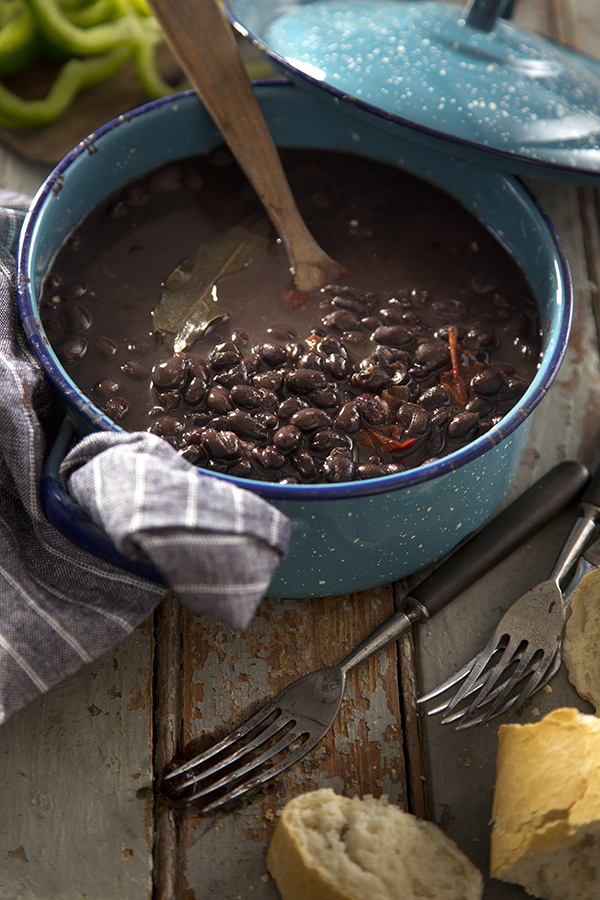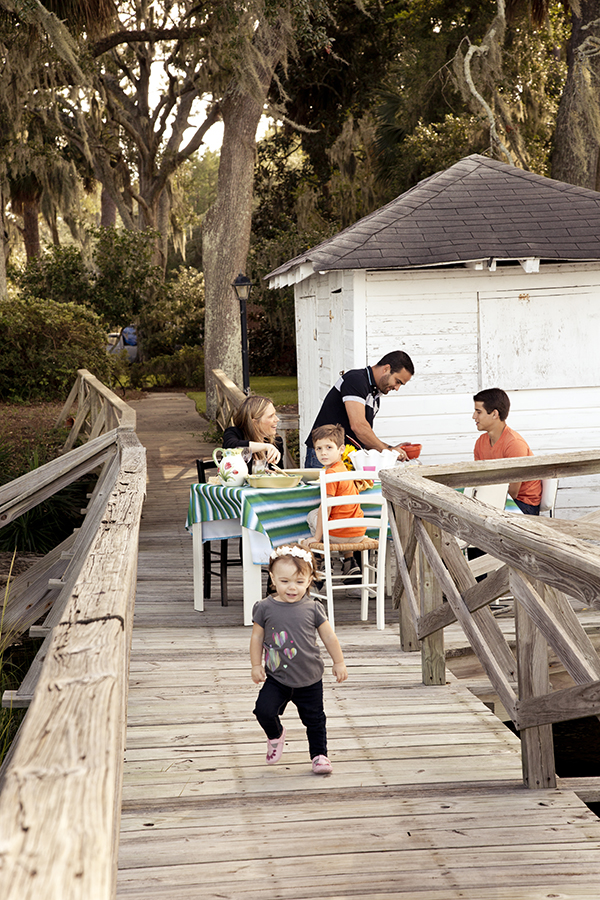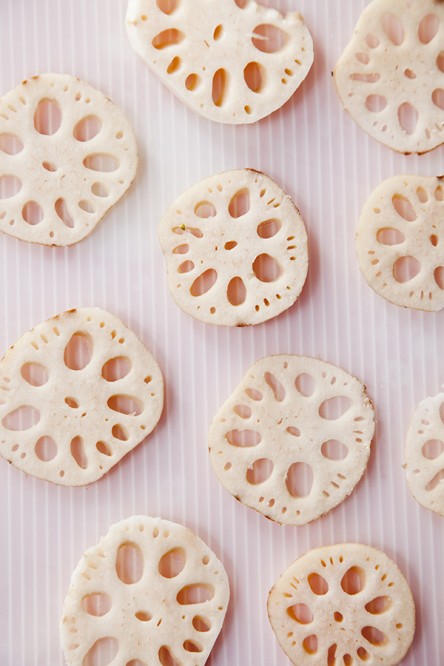Words by Melanie Bowden Simón
Photography by Chia Chong
Styling by Libbie Summers
It is impossible to wrap Hispanic Heritage Month, which ends October 15th, without mention of a Latin American staple – beans.
They are an integral part of everyday life and vary from country to country.
In Havana, Cuba, my husband’s home, by far the most common dish is black beans served with white rice. Properly done, the beans are flavored, not overpowered, by a sofrito, a sautéed base of garlic, onions, oil and salt, which is added to a simmering pot of four parts water, one part whole beans, cumin, a bay leaf, and red or green bell peppers (depending on what’s available in the unpredictable outdoor markets).
Black beans entered my life in college, wrapped in a burrito with rice, sour cream and tomatoes. It was instant love.
It wasn’t until my first trip to Cuba in 2001, where I met Luis as as tourist in search of Havana Vieja, that I tried the island’s classic black bean soup, served in a small side bowl, to be dished over a mound of rice. With the exception of breakfast, every meal I ate those two weeks was served with the duo.
A year later I found myself again in Havana’s José Martí airport, following months of platonic email exchanges with Luis. Only on that trip, there were fireworks. Later engaged, it was another two Cuba-centric years, a gazillion phone bills, airline tickets, nail-biting visits to the communist isle and loads of black beans later that the visa we worked so hard for was finally approved. Luis moved to Savannah, Georgia in 2004.
Like many newly married couples, we had a learning curve, but given the vast differences of our backgrounds, it was more like a steep hill we both had to climb.
I have traveled and lived in a number of different countries, but I come from a Germanic family that’s been in Savannah more than 200 years. Luis is from a large city with international influence, but his home is a tropical paradise cut off from most of the world. At the time he spoke Spanish and Italian, but zero English.
When we settled into my aunt and uncle’s small, garage apartment there was a lot of fine-tuning and figuring out. One upfront, he didn’t cook, but grew up with a mother with enormous natural talent. To the contrary, I was a kitchen hobbyist, a recipe follower, though I had shifted from the smothered foods and casseroles of my childhood to more simplistic plates, filled with grilled meats and seafood, stuffed potatoes, roasted vegetables and a killer homemade caesar dressing over romaine.
He ate my food, but over time it was sacrifice. Luis’ palate is more adventurous than mine, open to explore, but he missed home.
I wanted to bring Havana in, but I didn’t know how to wade in Latin Caribbean meats, textures and organs so foreign to me. Ropa Vieja, pollo en salsa, liver, tongue, chilindron (goat in a tomato-based sauce), plantains and the root vegetables, yuca, malanga and boniato.
So about five years ago Luis took matters into his own hands. He started throwing things around in pots and pans, inspired by his mother’s kitchen. It was a daily science experiment in our house and what I thought was a phase he would outgrow, but I began to realize that not only did he like toying with familiar smells, he also thrived in the chaotic mess of it all, the unprescribed creative freedom.
Sometimes the meals worked and sometimes they didn’t, but he kept at it.
One of the first recipes he nailed was yuca con mojo.
Yuca, also known as cassava, is a root crop grown throughout tropical and subtropical areas and in its dried form is tapioca. It is peeled and boiled like a potato and topped with mojo, which can vary in regions, but Luis makes it with olive oil, a chopped Vidalia onion, a few garlic teeth and salt smashed with a mortar and pestle, which keeps the garlic from flying from the pot, and a spot of vinegar at the end.
Remove the woody roots before you eat and it’s creamy, just sweet enough and so good that whenever my friends or family visit they all react the same: “What IS that?”
Beans, however, were a bit more of an effort.
No one uses cookbooks in Cuba, but Luis eventually referenced a handful of online recipes for guidance and then rid of them completely, settling on his own blended versions.
As he became more comfortable in the kitchen, and in the U.S., he edited the classic recipes further to ones that reflect our bicultural life.
One afternoon he arrived home with a huge box of simple, clear containers and propped them in our kitchen pantry, after filling them with whole, dried organic beans of all shapes, sizes and colors. Nothing high-end about it, but you can see the purity and mazes and patterns of the beans, which I find beautiful, just as I do in oversized grocery store bins.
Next to the black beans were his new muses: black-eyed peas, green lentils, slivered red split lentils, which are a distinct bright coral hue in bulk, navy, fava and kidney beans, red azukis and uneven, round garbanzos.
Our bean collection.
He began testing the protein-packed varieties in the pressure cooker, which baffles me, but it’s a terrific piece of equipment and one every Cuban owns, tapering each recipe to a bare minimum so the natural flavors dominated. I found each one uniquely delicious and an added bonus, all were healthy.
Cubans are known flavoring with pork, but I haven’t eaten it or beef in years. I had never asked for special treatment or substitutions, simply eating around what I didn’t want.
Yet, Luis uses almost none now, only a piece of chorizo here, a chunk of turkey bacon there, after questioning the necessity of additional fat, and has been able to do so without forgoing taste.
Curious, I asked how. He shared one of his secrets.
“This is the key,” he said, smiling, as he swirled whole cumin seeds in constant motion in a small pan, held about an inch over the stovetop flame. “Huele,” he said and lifted the toasted seeds under my nose. Strong and fragrant, but delicate.
He slid them into the mortar, gave them a quick pestle grind to release the flavor and added them to the black beans, already simmering with the sofrito, followed by a cup of red wine, a splash of vinegar and un tin de sugar.
I can’t stand the smell of the vinegar burning off at the end and always leave the kitchen, but he immediately turns the heat off and lets the final flavors meld. When served, each bowl of beans is drizzled with olive oil.
Put the yuca con mojo in the black beans and it’s all over. I mean the best of the best. A few slices of avocado sprinkled with salt on the side, or in the beans, too, and this is as good as it gets to me.
Forget Cuban or American food, there is something powerful about feeding your children quality, wholesome meals, a driving factor in Luis’ evolution in the kitchen. It’s also, he notes, a direct way for him to share Cuba with his kids.
We all gobble it up nightly and I personally can’t wait to see what he’ll come up with next.
(A note from Libbie and Chia: We’ll share Luis’ recipes for Black Beans and Yuca later in the week so be sure to check back…we ate them after this photo shoot and they were AMAZING!)
Melanie Bowden Simón is a freelance writer, editor and publicist based in Savannah, GA. Following journalism and Spanish degrees from the University of Georgia, she worked for Tina Brown, Harvey Weinstein and Cathleen Black at Talk Media. She says hands down, this was the best and brightest education a kid could ask for.



















